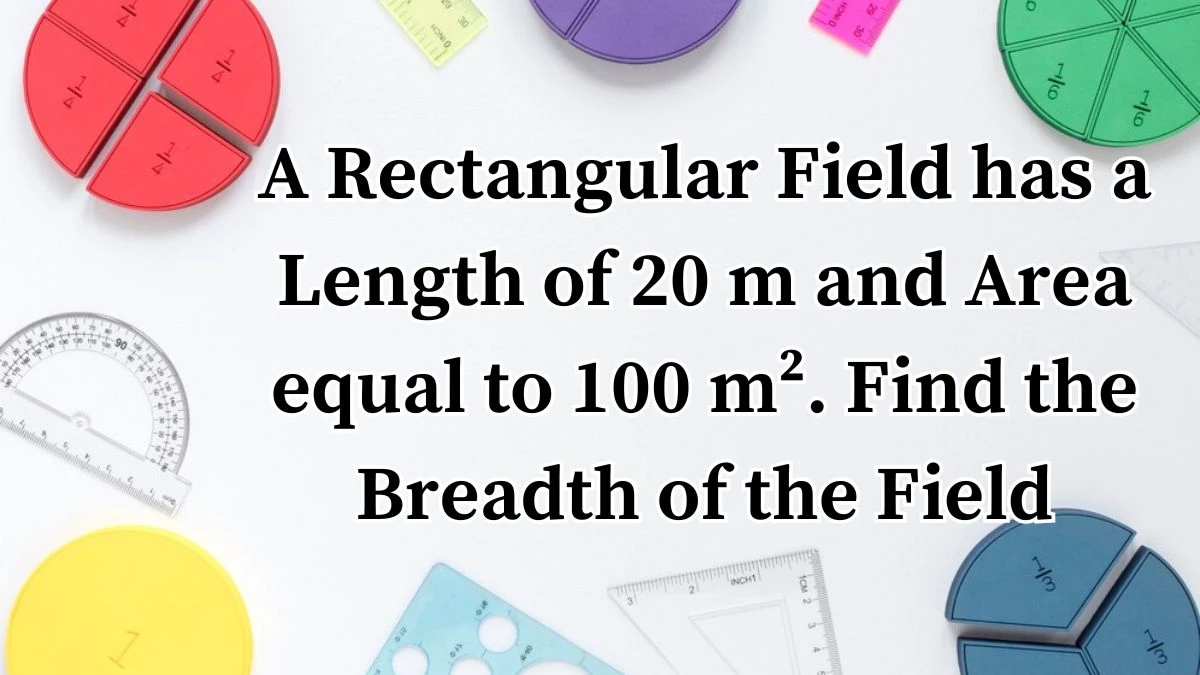A Rectangular Field has a Length of 20 m and Area equal to 100 m². Find the Breadth of the Field
To find the breadth of a rectangular field, divide the area by the length using the formula Area. Then find the breadth of the field.
by
Updated Jun 19, 2024
Advertisement

A Rectangular Field has a Length of 20 m and Area equal to 100 m². Find the Breadth of the Field
To find the breadth of a rectangular field given its length and area,
Article continues below advertisement
The length of the rectangular field is 20 meters
The area of the rectangular field is 100 square meters
The formula to calculate the area of a rectangle is Area = length × breadth
Given: Area = 100 square meters and length (l) = 20 meters
100 = 20 × breadth (b)
To find the breadth, isolate b on one side of the equation
Divide both sides of the equation by the length (20 meters)
b = 100/20
b = 5
The breadth of the rectangular field is 5 meters
Concept of Rectangular Dimensions
A rectangle is a four-sided figure with opposite sides that are equal in length and all angles that are right angles. The two main dimensions of a rectangle are its length and breadth (or width).
Area of a Rectangle:
- The area of a rectangle is a measure of the space inside the rectangle.
- It is calculated by multiplying the length by the breadth. The formula is Area = length × breadth.
Finding Length or Breadth:
- If you know the area and one dimension (either the length or the breadth), you can find the missing dimension.
- To find the missing dimension, you can rearrange the area formula breadth = Area ÷ length or length = Area ÷ breadth.
Solving for the Missing Dimension:
- Substitute the known values into the rearranged formula to solve for the unknown dimension.
- Perform the necessary arithmetic operation (division) to find the missing dimension.
Applications of Rectangular Dimensions
- Knowing how to find the dimensions of a rectangle is useful in many real-life situations, such as determining the size of a piece of land, planning the layout of a room, or calculating the amount of material needed for construction projects.
- Understanding these basic geometric principles helps in making accurate measurements and efficient use of space.




